Central venous blood gas analysis an alternative to arterial analysis

This study was aimed to investigate the correlation of pH, PCO2, bicarbonate, sodium, potassium, and chloride (electrolytes) between ABG and central VBG in ICU patients” Bijapur et al (2019). Abstract: AIMS: Arterial blood gas (ABG) analysis is a frequently ordered test in intensive care unit (ICU) and can analyze electrolyte in addition to pH and […]
Overuse of intravenous infusions in China reviewed

This article reviews the current status of the overuse of intravenous (IV) infusions in China and implications to patient safety, and analyzes factors associated with the overuse” Zeng et al (2019). Abstract: This article reviews the current status of the overuse of intravenous (IV) infusions in China and implications to patient safety, and analyzes factors […]
Therapeutic drug monitoring-guided continuous infusion of piperacillin/tazobactam

We assessed the effect of therapeutic drug monitoring-guided (TDM), continuous infusion (CI) and individual dosing of piperacillin/tazobactam (PIP) on PK-target attainment in critically ill patients” Richter et al (2019). Abstract: PURPOSE: Standard dosing and intermittent bolus application (IB) are important risk factors for pharmacokinetic (PK) target non-attainment during empirical treatment with β-lactams in critically ill […]
Maintenance antisepsis in reducing the rate of late-onset central venous catheter-related bloodstream infection
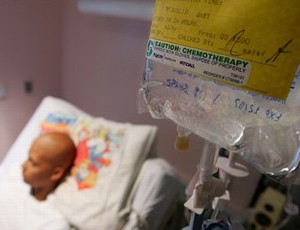
We aimed to analyze the effectiveness of maintenance antisepsis at the CVC insertion site in reducing the CRBSI risk through comparing the use of 0.05% chlorhexidine to 1% chlorhexidine” Kikuchi et al (2019). Abstract: BACKGROUND: Bundled measures have been recommended to reduce the risk of central venous catheter (CVC)-related bloodstream infection. However, the importance of […]
Potential efficacy of garlic IV lock therapy in combating biofilm formation

Is to estimate the potential use of fresh garlic extract (FGE) as a lock agent against multi-drug resistant (MDR) bacteria” Farrag et al (2019). Abstract: BACKGROUND: Life-threatening central venous catheter-related infections are primarily initiated by biofilm formation on the catheter surface. Antibiotic lock therapy is recommended for eradicating intraluminal biofilm. In the era of antibiotic […]
Case study describes bilateral absence of the superior vena cava

Bilateral absence of the superior vena cava (SVC) is an uncommon congenital vascular anomaly, mainly asymptomatic, usually undetected, and often associated with other cardiac anomalies” Derbel et al (2019). Abstract: Bilateral absence of the superior vena cava (SVC) is an uncommon congenital vascular anomaly, mainly asymptomatic, usually undetected, and often associated with other cardiac anomalies. […]
Evidence-based reduction of neonatal CLABSI rates

The objective was to decrease CLABSIs using evidence-based measures. The retrospective review compared CLABSI incidence during and after changes in catheter care” Dumpa et al (2019). Abstract: Advances in neonatology led to survival of micro-preemies, who need central lines. Central line-associated bloodstream infection (CLABSI) causes prolonged hospitalization, morbidities, and mortality. Health care team education decreases […]
Risk factors for totally implantable vascular access device complications

The objective of the present study was to investigate the incidence of long-term complications and identify risk factors associated with TIVAD placement in patients with gastric cancer” Okazaki et al (2019). Abstract: Totally implantable vascular access devices (TIVADs) are often used to administer chemotherapy by prolonged intravenous infusion. The objective of the present study was […]
Prevention of dilator injuries during central venous catheter placement
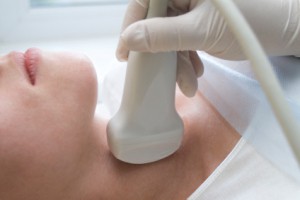
Misuse of vascular dilators during the placement of central venous catheters has been infrequently reported and can lead to devastating intrathoracic hemorrhage and death” Collier (2019). Abstract: BACKROUND: Misuse of vascular dilators during the placement of central venous catheters has been infrequently reported and can lead to devastating intrathoracic hemorrhage and death. These injuries should […]
Perioperative neutropenia is not an independent risk factor for CLABSI in children

This study aims to investigate the early (≤30 days) and late (>30 days) infectious complications of CVLs placed in pediatric patients with and without neutropenia” Cunningham et al (2019). Abstract: BACKGROUND: The infectious risk of central venous line (CVL) placement in children with neutropenia (absolute neutrophil count [ANC] 30 days) infectious complications of CVLs placed in pediatric patients […]
Infective risk factors for critically ill burn patients

We conducted a systematic review and meta-analysis to identify potentially modifiable risk factors for multidrug-resistant Gram-negative colonization or infection in critically ill burn patients” Vickers et al (2019). Abstract: BACKGROUND: We conducted a systematic review and meta-analysis to identify potentially modifiable risk factors for multidrug-resistant Gram-negative colonization or infection in critically ill burn patients. METHODS: […]
Clinical impact of delayed central venous catheter removal

We evaluated the impact of delayed CVC removal on mortality according to the severity of comorbidities in patients with candidaemia” Lee et al (2019). Abstract: Background: The effects of early central venous catheter (CVC) removal on the clinical outcomes of patients with candidaemia remain controversial. We evaluated the impact of delayed CVC removal on mortality […]
Association of race and ethnicity with vascular access outcomes

The objective of this study is to examine the association of race with outcomes of hemodialysis access and selection of arteriovenous fistula versus arteriovenous graft” Copeland et al (2019). Abstract: BACKGROUND: Black end-stage renal disease (ESRD) patients represent 30.5% of the prevalent ESRD population in the United States, despite only accounting for 18% of the […]
Comparing PICC infectious complications with other types of central catheters

There is insufficient evidence to show a difference in CRBSI rates between PICCs and tunneled catheters. On the other hand, PICCs showed lower CRBSI rates than ports” Mateo-Lobo et al (2019). Abstract: BACKGROUND: Home parenteral nutrition (HPN) has become a common therapy. There is still controversy regarding the possibility that peripherally inserted central catheters (PICCs) […]
Survey suggests rise in the incidence of sharp injuries

There is an urgent need for aggressive SI-reduction strategies, including leadership support, safety-engineered devices (SED) training/education, and adoption of safer, less user-dependent SED” Grimmond and Good (2019). Abstract: Background: The annual Exposure Survey of Trends in Occupational Practice (EXPO-S.T.O.P.), conducted by the Association of Occupational Health Professionals in Healthcare, provides a U.S. national overview of […]
Antibiotic prophylaxis prior to totally implantable port placement
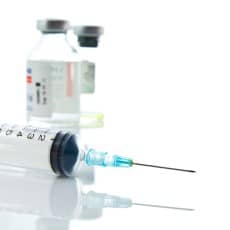
To determine if ending the practice of administering prophylactic antibiotics prior to the placement of totally implantable venous access devices (TIVADs) is correlated with an increase in 30-day bloodstream infection-related TIVADs removals” Choksi et al (2019). Abstract: BACKGROUND: To determine if ending the practice of administering prophylactic antibiotics prior to the placement of totally implantable […]
Incidence and prevention behavior for needlestick injuries

This study analyzes the different rate of incidence and prevention behavior for needlestick injuries (NSIs)” Silowati et al (2019). Abstract: OBJECTIVE: This study analyzes the different rate of incidence and prevention behavior for needlestick injuries (NSIs). METHOD: This is a quantitative study using a cross-sectional design. Respondents were selected using a stratified sampling method. The […]
What is the burden of CLABSI on hospital admission?

Efforts to reduce CLABSIs should address patients across the entire health care system” Leeman et al (2019). Abstract: Few data exist on the incidence of central line–associated bloodstream infection present on hospital admission (CLABSI-POA), although the practice of patients maintaining central lines outside of hospitals is increasing. We describe patients presenting to an academic medical […]
Incidence and analysis of sharps injuries and splash exposures

We aimed to report the ten-year incidence and trend of sharps injuries and splash exposures (SISE), and analyse the causative instruments and risk factors leading to these injuries to identify potential areas of improvement” Leong et al 92019). Abstract: INTRODUCTION: We aimed to report the ten-year incidence and trend of sharps injuries and splash exposures […]
Reduction of needlestick injuries by 48 % in one year

The aim of this study was to evaluate the effectiveness of a safety concept according to the EU Council Directive 2010/32/EU on prevention of NSI” Busche et al (2019). Abstract: BACKGROUND: Needlestick injuries (NSI) are potentially infectious injuries from sharp or pointed medical instruments and through contact with blood on mucous membranes or nonintact skin. […]
Administering neostigmine as a subcutaneous infusion

The use of neostigmine as a continuous subcutaneous infusion may have a role in the management of such patients, particularly when enteral administration of acetylcholinesterase inhibitors is no longer possible” Hindmarsh et al (2019). Abstract: BACKGROUND: Abrupt withdrawal of pharmacological therapies for myasthenia gravis can exacerbate muscle weakness and even trigger myasthenic crisis. Such medications […]
Comparison between implantable ports and PICCs

To compare the differences of complications and costs of PICC and IPC in the treatment of cancer patients with chemotherapy and to provide a basis for better clinical decision making” Pu et al (2019). Abstract: BACKGROUND: Peripherally inserted central catheters (PICCs) and implantable port catheters (IPCs) are 2 most common central venous access for cancer […]
Hypotensive episodes associated with azithromycin infusion

We report the first case of hypotensive episodes associated with intravenous (IV) azithromycin” Wong et al (2019). Abstract: We report the first case of hypotensive episodes associated with intravenous (IV) azithromycin. This is a potentially fatal adverse drug reaction (ADR), with the risk of irreversible end-organ damage, and therefore must be recognized and treated immediately. […]
Ethanol lock therapy markedly reduces CLABSI

Our aim was to determine whether the routine institution of ELT decreased the incidence of CRBSI compared with historic controls at Emory University Hospital (EUH) in Atlanta, Georgia, USA” Gundogan et al (2019). Abstract: BACKGROUND: The use of central venous catheter (CVC) access for home parenteral nutrition (HPN) is associated with catheter-related bloodstream infections (CRBSIs). […]
IV acetaminophen and important nursing considerations
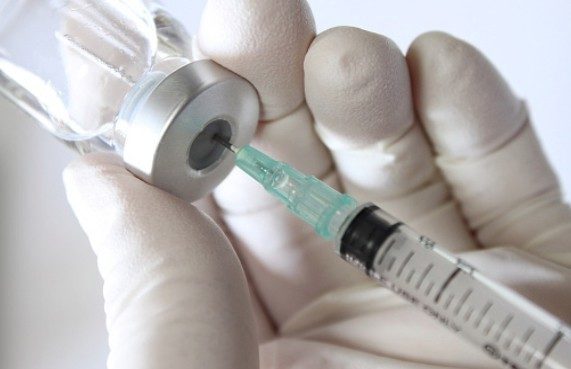
This article examines the evidence supporting the use of acetaminophen and reviews important nursing considerations” Peterson et al (2019). Abstract: THE FDA approved the use of I.V. acetaminophen in November 2010, but it has been commercially available in many countries outside the US since 2001.1 I.V. acetaminophen is indicated for managing mild-to-moderate pain, moderate-to-severe pain […]
Review of patient and caregiver-performed OPAT

The objective of this study was to characterize patient understanding of patient, caregiver, and health care worker roles in OPAT and barriers to fulfilling these roles, with the goal of understanding how to best support patients and their caregivers” Keller et al (2019). Abstract: BACKGROUND: Complicated medical therapies traditionally performed in acute care hospitals are […]
Achieving zero central line-associated bloodstream infections

Every health care facility aims to achieve and maintain a zero central line-associated bloodstream infection (CLABSI) rate. Infections can be costly for institutions of any size and are often not covered by health insurance” Jamous et al (2019). Abstract: Every health care facility aims to achieve and maintain a zero central line-associated bloodstream infection (CLABSI) […]
Complications of upper extremity versus lower extremity neonatal PICC

To compare the risks of catheter-related complications between peripherally inserted central catheters placed via the upper and lower extremities in neonatal intensive care units” Chen et al (2019). Abstract: OBJECTIVE: To compare the risks of catheter-related complications between peripherally inserted central catheters placed via the upper and lower extremities in neonatal intensive care units. RESEARCH […]
Review of sharps safety-engineered device use in the UK

The 2013 UK sharps safety regulations require healthcare facilities to use safety-engineered devices (SEDs) to protect staff. The recent increase in UK-reported occupational exposures could indicate increased reporting or increased exposures from suboptimal SED use” Grimmond (2019). Abstract: BACKGROUND: The 2013 UK sharps safety regulations require healthcare facilities to use safety-engineered devices (SEDs) to protect […]
Future trends in the efficacy and safety of transfusion medicine
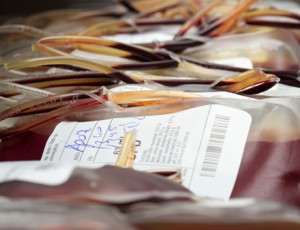
The important scientific and clinical advances of the last century in transfusion medicine include methods for avoiding hemolytic transfusion reactions and preventing transmission of viral infectious diseases” Blumberg et al (2019). Abstract: The important scientific and clinical advances of the last century in transfusion medicine include methods for avoiding hemolytic transfusion reactions and preventing transmission […]

